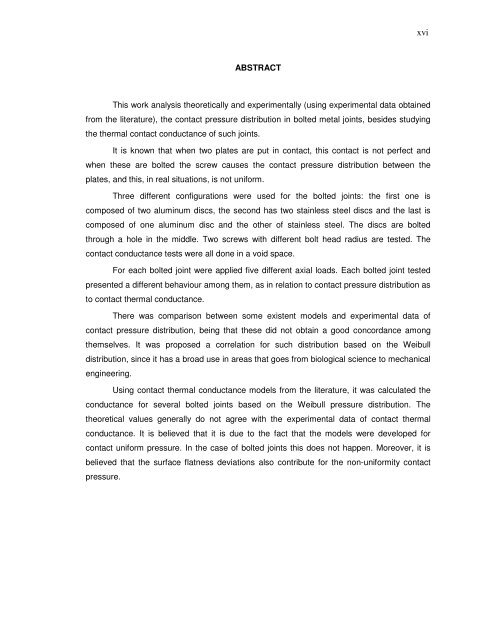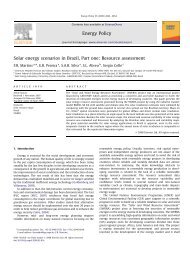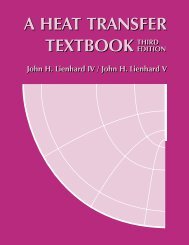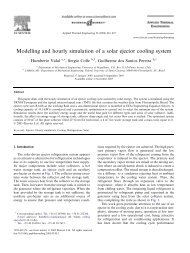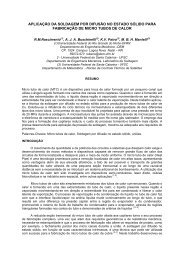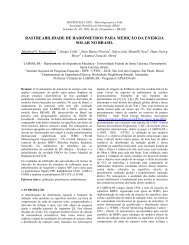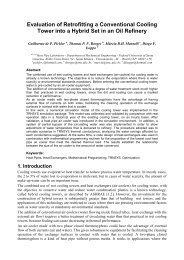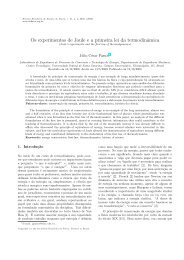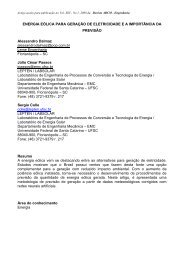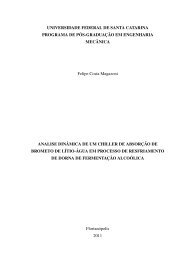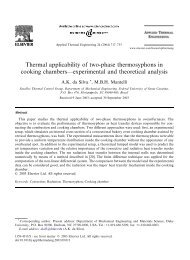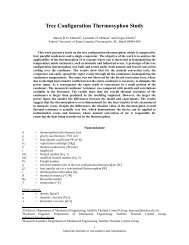Eliete Pereira - LEPTEN - Universidade Federal de Santa Catarina
Eliete Pereira - LEPTEN - Universidade Federal de Santa Catarina
Eliete Pereira - LEPTEN - Universidade Federal de Santa Catarina
You also want an ePaper? Increase the reach of your titles
YUMPU automatically turns print PDFs into web optimized ePapers that Google loves.
xviABSTRACTThis work analysis theoretically and experimentally (using experimental data obtainedfrom the literature), the contact pressure distribution in bolted metal joints, besi<strong>de</strong>s studyingthe thermal contact conductance of such joints.It is known that when two plates are put in contact, this contact is not perfect andwhen these are bolted the screw causes the contact pressure distribution between theplates, and this, in real situations, is not uniform.Three different configurations were used for the bolted joints: the first one iscomposed of two aluminum discs, the second has two stainless steel discs and the last iscomposed of one aluminum disc and the other of stainless steel. The discs are boltedthrough a hole in the middle. Two screws with different bolt head radius are tested. Thecontact conductance tests were all done in a void space.For each bolted joint were applied five different axial loads. Each bolted joint testedpresented a different behaviour among them, as in relation to contact pressure distribution asto contact thermal conductance.There was comparison between some existent mo<strong>de</strong>ls and experimental data ofcontact pressure distribution, being that these did not obtain a good concordance amongthemselves. It was proposed a correlation for such distribution based on the Weibulldistribution, since it has a broad use in areas that goes from biological science to mechanicalengineering.Using contact thermal conductance mo<strong>de</strong>ls from the literature, it was calculated theconductance for several bolted joints based on the Weibull pressure distribution. Thetheoretical values generally do not agree with the experimental data of contact thermalconductance. It is believed that it is due to the fact that the mo<strong>de</strong>ls were <strong>de</strong>veloped forcontact uniform pressure. In the case of bolted joints this does not happen. Moreover, it isbelieved that the surface flatness <strong>de</strong>viations also contribute for the non-uniformity contactpressure.


